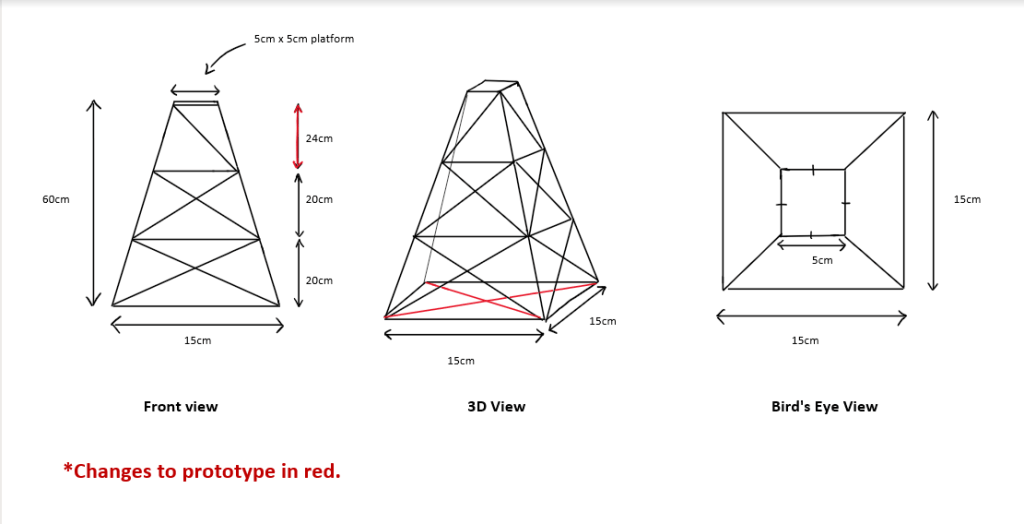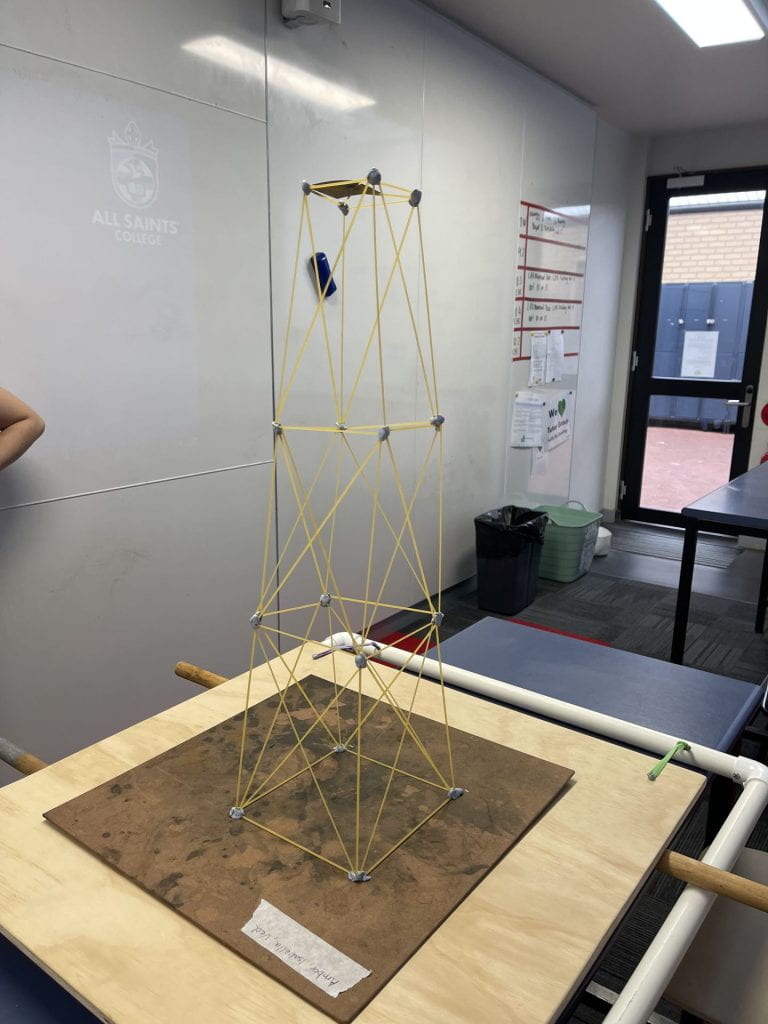Share and Communicate:

Representation of the Project:
This engineering project aimed to address the challenge of constructing an earthquake-resistant structure using limited resources: which included dry spaghetti and Blu Tack, with a budget constraint of 60 dollars to complete the entire structure. We organised ourselves into groups of three, with my group including Amber, Isabella, and me. Every group member had a specific role and purpose to maximise productivity. In our prototype, the key design principles included base isolation, diagonal cross bracing, and strategic weight distribution. Our goal was for our prototype to withstand simulated earthquake conditions, emphasizing the need for stability and adaptability in the design.

Overview of the Engineering Process:
The engineering process unfolded through a multitude of steps, beginning with the definition of the problem at hand – creating a cost-effective, earthquake-resistant model. After we had designated individual roles to each group member, we started to conduct research using reliable sources to gather data and information. Research into seismic design principles informed our approach, and the subsequent prototype construction phase allowed for the practical application of these concepts. Iterative testing became a critical component, providing valuable real-time insights. We created two prototypes, and tested both to see what improvements we could make and to explore the potential adjustments which could be implemented to the structure of the building. Looking forward, improvements in the engineering process could involve early identification of potential design challenges through a more comprehensive pre-construction analysis, as our drawn design was not as detailed and developed as it could have been. Additionally, a detailed budget breakdown would enhance resource allocation and cost-effectiveness, ensuring optimal utilisation of the 60-dollar budget.
Teamwork and Collaboration:
Collaboration:

We had to collaborate as a group and designate individual roles to each member. Amber created comprehensive diagrams and drawings of the earthquake-resistant model. Her expertise in visual representation contributed to clear communication of the design.
Isabella had the role of overseeing the construction of the physical model. Her hands-on approach and attention to detail ensured the accurate implementation of design principles, to eventually create an earthquake-resistant prototype.
My role, focused on documentation, filming, and photography. This involved capturing the engineering process from conception to completion. Documenting the construction phases, filming the testing procedures, and photographing the final model.
Conclusion:
In conclusion, our science engineering process was a great learning oppurtunity. Acknowledging each team member’s unique strengths, continuous communication, early problem identification, and a more detailed budget breakdown emerge as crucial considerations for future projects, creating the best outcome possible for our model.